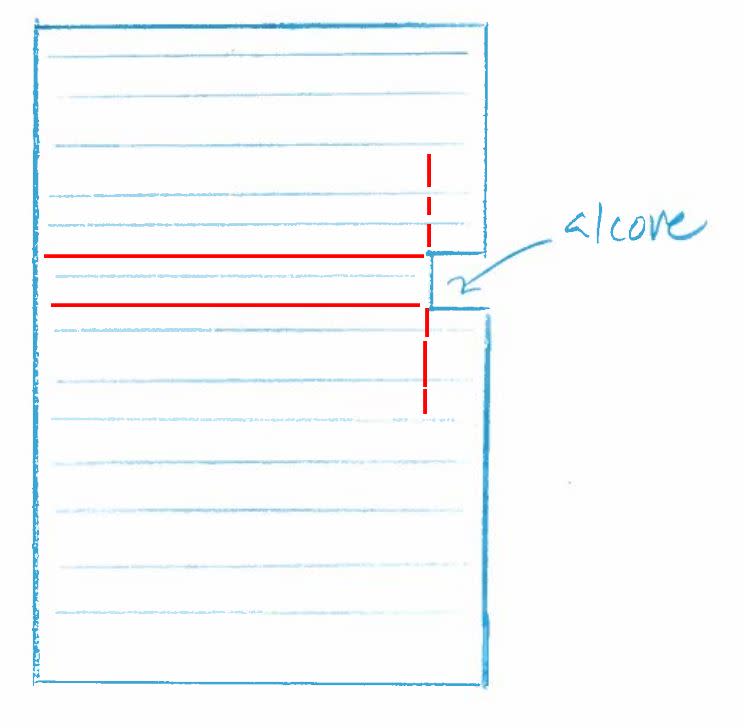Gumpmaster
Structural
I have a single story CMU building with a steel roof deck supported by steel joists. The building is in a high seismic zone (SDS=1.0). It's an industrial facility but it looks pretty similar to a strip mall building.
The architect has shown an alcove in the middle of the long walls (~100ft total wall length). The alcove is about 7 ft square and extends the full height of the building, including the roof deck. If you look at it as a flexible diaphragm, then the alcove walls take the majority of my diaphragm shear. The issue is that, considering the door in the alcove, I only have 4' of shear wall in the alcove and can't in any way take that diaphragm shear down to the foundation.
How would this best be detailed? I don't really want a drag strut because I don't want my walls to take the shear. It would be best to cut the alcove free from the diaphragm, but I don't see that's possible. I do have a shelf angle supporting the deck that I could put horizontal holes in. I can't just call it a non-bearing wall.
How do you normally deal with this situation? Is the secret to look at it as a semi-rigid diaphragm?
Thanks.
The architect has shown an alcove in the middle of the long walls (~100ft total wall length). The alcove is about 7 ft square and extends the full height of the building, including the roof deck. If you look at it as a flexible diaphragm, then the alcove walls take the majority of my diaphragm shear. The issue is that, considering the door in the alcove, I only have 4' of shear wall in the alcove and can't in any way take that diaphragm shear down to the foundation.
How would this best be detailed? I don't really want a drag strut because I don't want my walls to take the shear. It would be best to cut the alcove free from the diaphragm, but I don't see that's possible. I do have a shelf angle supporting the deck that I could put horizontal holes in. I can't just call it a non-bearing wall.
How do you normally deal with this situation? Is the secret to look at it as a semi-rigid diaphragm?
Thanks.

